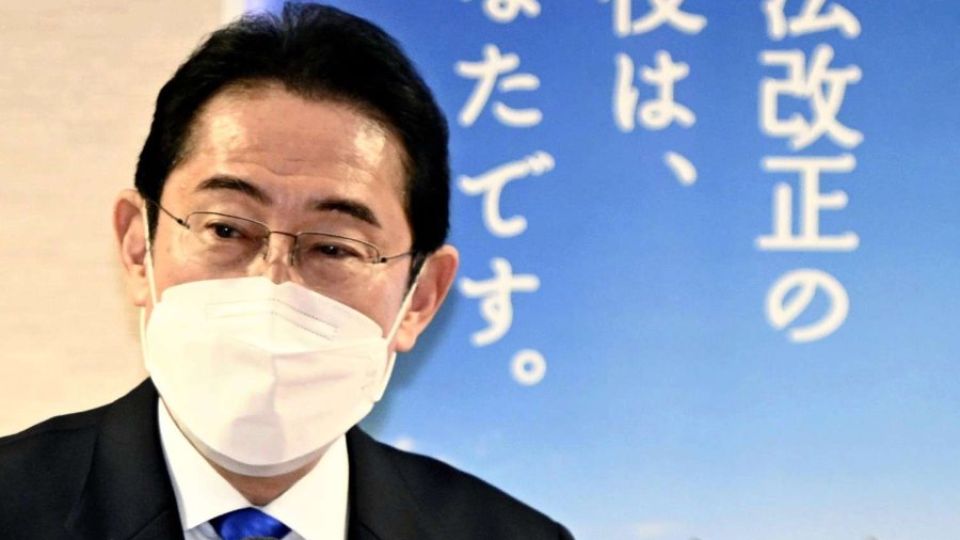March 27, 2023
TOKYO – Prime Minister Fumio Kishida has yet to crack the secret of engaging with Japan’s younger voters. Since assuming office, his Cabinet’s approval rating has consistently fallen among people ages 18-29. The latest figures show the Cabinet’s approval rating among this age bracket to be lower than the average figure among all generations for the first time in a decade. Kishida’s predecessors, Shinzo Abe and Yoshihide Suga, both enjoyed high popularity among young people, giving rise to the question: Where is Kishida coming up short?
Low view-count
A video posted on the official site of the Prime Minister’s Office showing Kishida throwing the ceremonial first pitch in the World Baseball Classic on March 10 has garnered more than 70,000 views. Videos of his press conferences, meanwhile, have attracted far less attention, ranging from a few thousand to 20,000 views each. On the other hand, Abe’s press conference videos have each notched up tens to hundreds of thousands of views, while some videos featuring his official overseas trips have surpassed 100,000 views.
A tally of the view-count for a video marking each leader’s first year in office shows Suga in first place with 43,000 views, Abe in second place with 37,000 and Kishida bringing up the rear with 11,000.
“[The prime minister’s] popularity among young people is reflected in the view-count,” said Yuki Murohashi, 34, who heads the Japan Youth Conference, which pitches policy proposals to political parties from the standpoint of young people. “When making videos, it’s important to use words and [underline] achievements in a snappy manner. It is possible that Kishida’s comments lack clarity and are failing to land with young people.”
Reformist image lacking
Approval ratings for the Kishida Cabinet have been consistently low, but disinterest among the 18-29 age bracket has been particularly marked.
Upon transforming Yomiuri Shimbun Cabinet approval rating data from 2006-2022 into annualized rating figures, it was found that the approval rating among young people in 2022 was 53%, two percentage points below the all-generation rating. This is the first time since 2013 — shortly after the formation of the second Abe Cabinet — that a support rating has fallen below the overall rate.
During Abe’s time in office from 2013 to 2019, approval rates among young people ranged between 53% and 71% — three to 16 percentage points higher than the overall ratings figures. When the Suga Cabinet held power in 2020, approval among 18-29-year-olds stood at 61%, 10 percentage points higher than the average support rate among all generations. When the Kishida Cabinet launched in 2021, the figure fell to 54%, but was still nine points higher than the overall rate.

In the summer of last year, a joint survey conducted by Yomiuri and Waseda University found that 59% of young respondents did not “highly evaluate” or “rather highly evaluate” Kishida’s desire for reforms — the highest figure among respondents of all generations. The number was almost double the 31% seen in the autumn of 2021, immediately after the formation of the Kishida Cabinet.
In the Yomiuri-Waseda survey, respondents were also asked which of the three prime ministers — Kishida, Suga and Abe — best fit 10 different descriptions, including “serious” and “cheerful.” Respondents of all generations unanimously said Kishida has a “lucky” image, while some non-young-generation respondents also settled on such choices as “clean” and “has few enemies.” However, data from the majority of young respondents showed Suga easily trumping Kishida for these last two descriptors.
Messages that resonate
Policy measures also tie into Cabinet approval ratings. For example, while in office, Abe implemented his “Abenomics” economic policy and work-style reforms, while Suga promoted such measures as lowering mobile phone charges and insurance coverage for infertility treatment. Policies that directly relate to daily life and future possibilities also resonated among young people, leading to high approval ratings for both Abe and Suga.
Kishida has touted his policy measures using such soundbites as “a new form of capitalism” and “unprecedented measures to deal with the declining birth rate,” but he has yet to secure financial resources for such ideas, casting a cloud over their feasibility.
Facing questions in the House of Councillors in January, Kishida said his government would support the “reskilling” of people during maternity and childcare leave. However, this remark met with criticism, with one person saying, “There’s no time for that when raising a child.” The prime minister was later forced to backpedal on his comment, saying people should only brush up their skills if they felt inclined to do so.
Whither Kishida?
Many young people had high expectations of Kishida when he first came to power. However, he apparently has failed to effectively convey his personality and policies to a younger audience, suggesting a somewhat “colorless” appeal.
For Kishida to get young voters back on-side, he needs to formulate powerful messages and implement specific policies that resonate with their generation.

